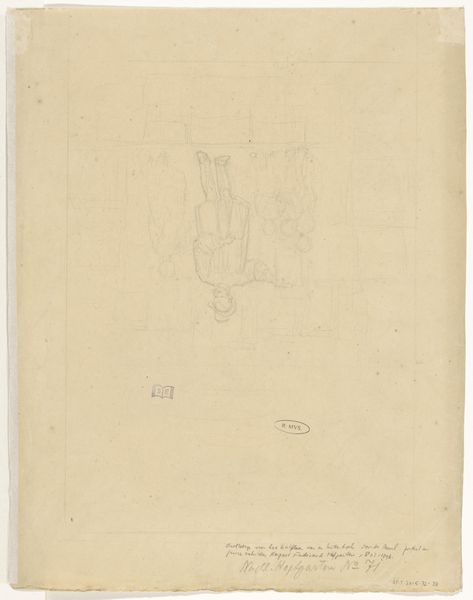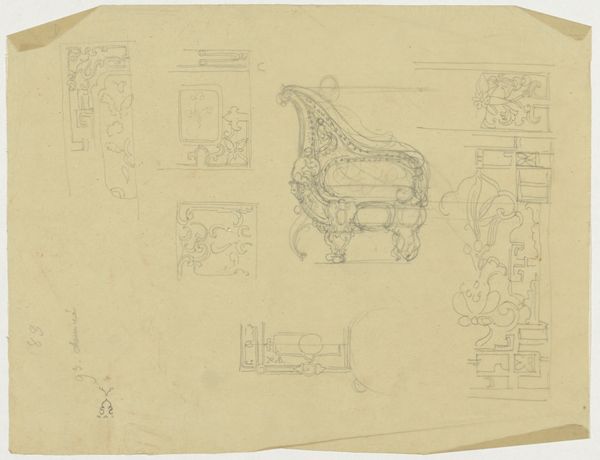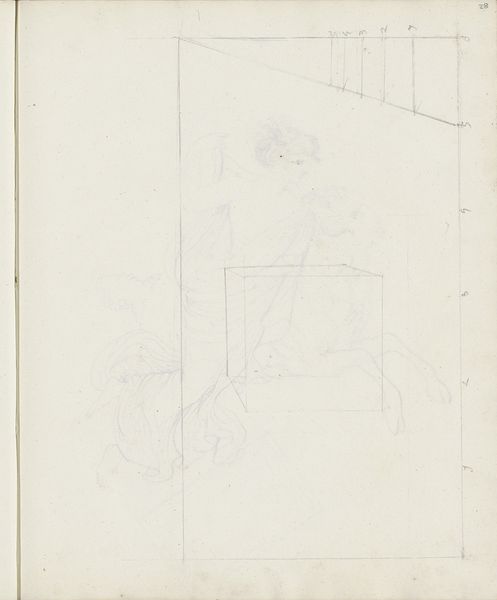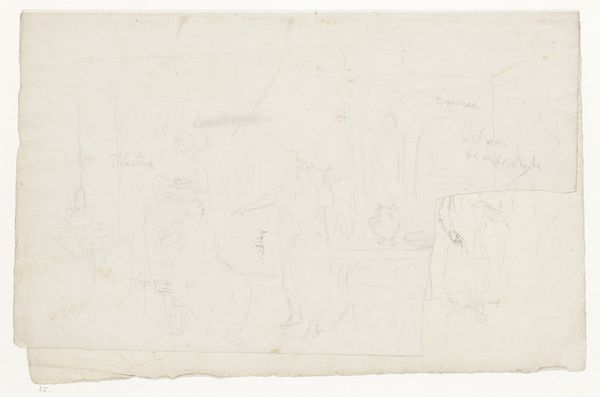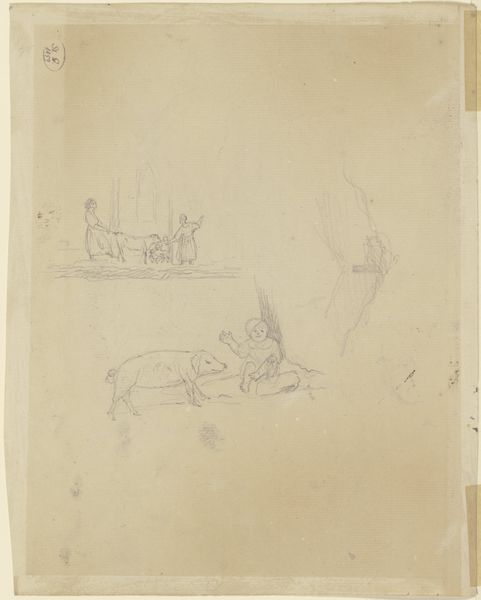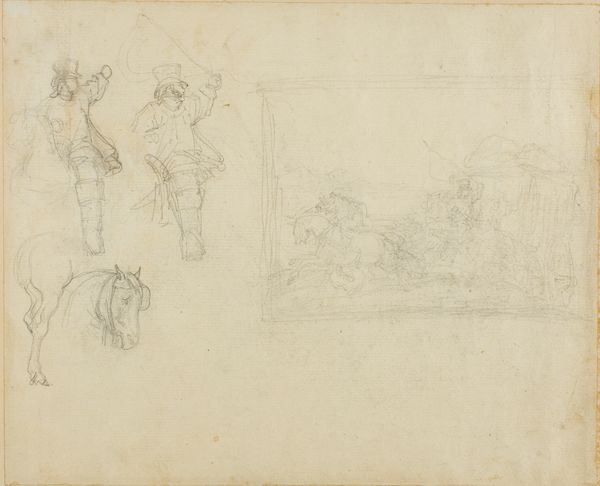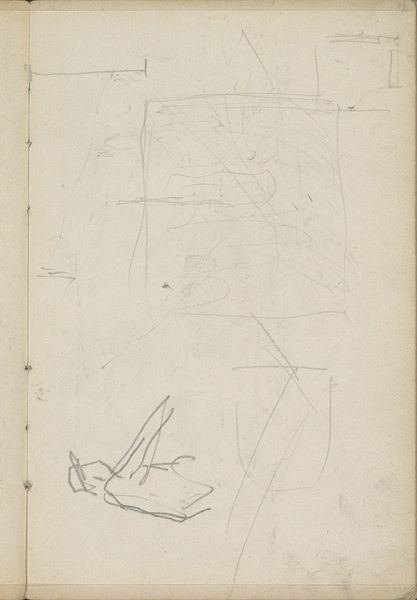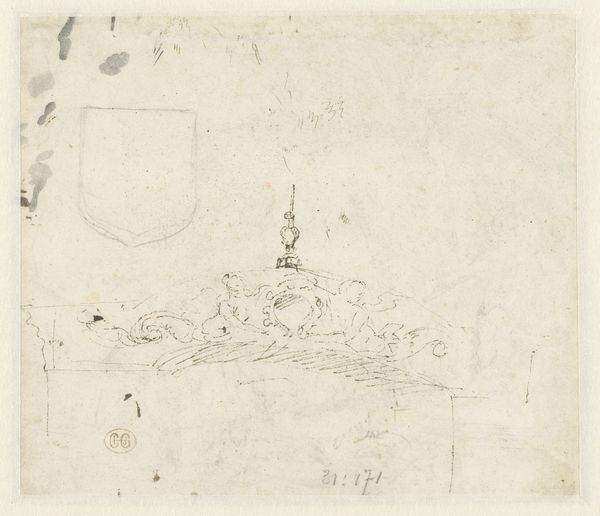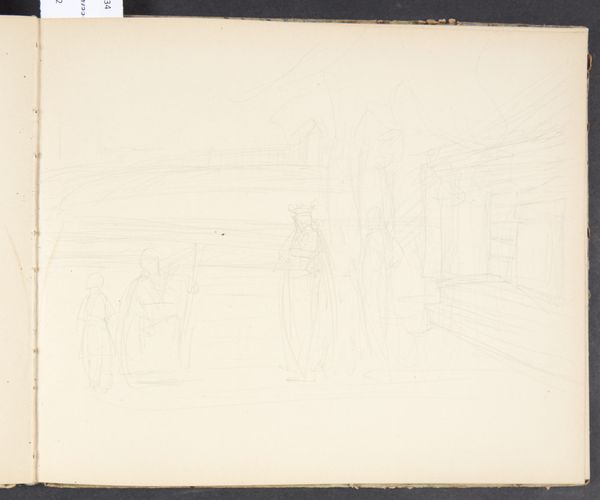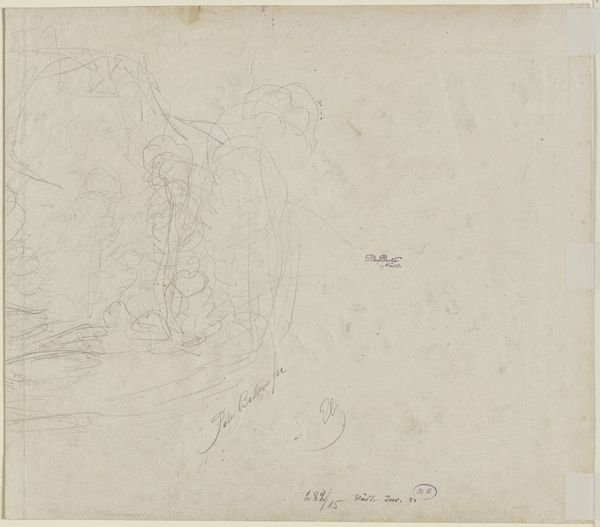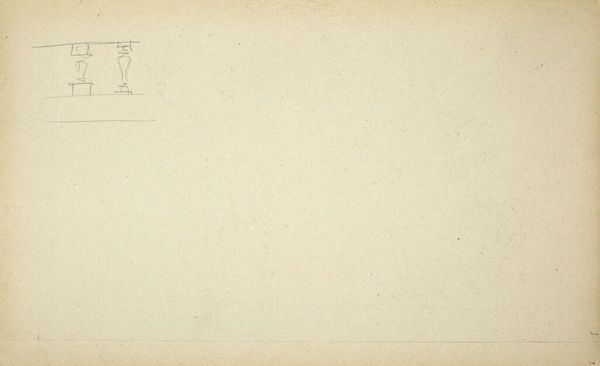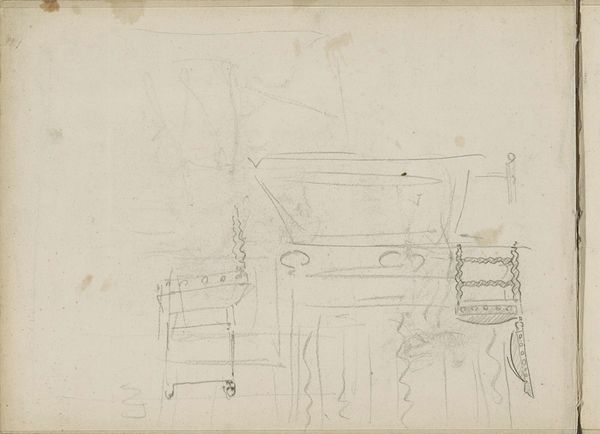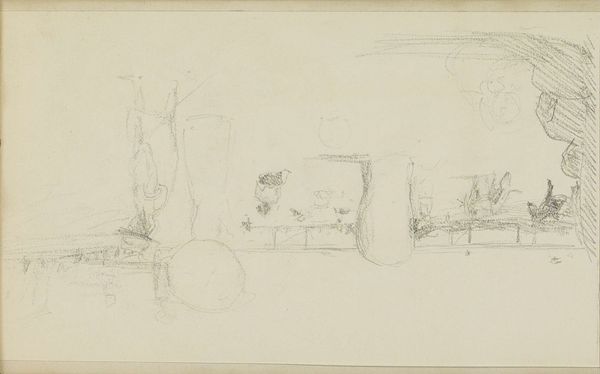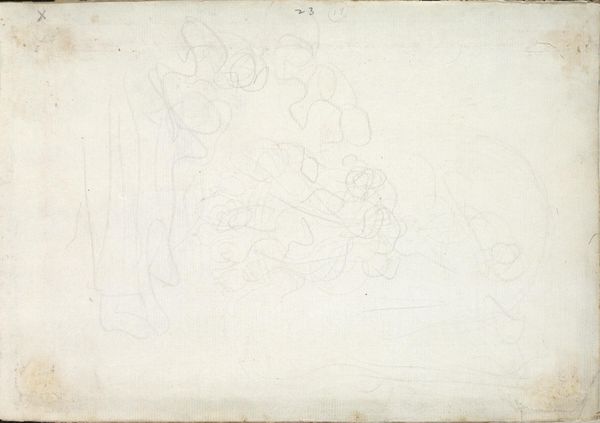
drawing, weaving, paper, pencil
#
portrait
#
drawing
#
light pencil work
#
weaving
#
paper
#
personal sketchbook
#
pencil
#
15_18th-century
#
sketchbook drawing
#
genre-painting
#
northern-renaissance
#
sketchbook art
Dimensions: height 360 mm, width 400 mm
Copyright: Rijks Museum: Open Domain
Curator: Here we have a drawing by Jan Brandes, dating from between 1779 and 1785, titled "Weefsters bij weefgetouw"—or, "Weavers at a Loom." It's a pencil drawing on paper. My initial impression is one of quiet industry, the soft pencil lines lending a gentle, almost domestic air. Editor: It feels fragile, doesn't it? Looking at this, I’m struck by the sheer labor involved in textile production at this time. The drawing, rendered with such light pencil work, depicts labor as intensely manual—done by people, mainly women I believe, not machines. Curator: Absolutely. And consider the composition; the weavers are central, positioned at their looms. Notice how Brandes uses lines to define the shapes of the looms themselves, creating a grid-like structure that contrasts with the curves of the figures. This play of geometry gives the artwork a unique tension. Editor: That "tension" also speaks to the economic realities. This isn’t just a scene of labor. It reveals the power dynamics inherent in a system where women’s work was essential, yet often undervalued and hidden from more public view. These weavers' realities likely involved exploitation and long hours for very little pay. How does the work visually depict these economic disparities or hardships? Curator: True, Brandes doesn’t directly address those hardships here; this is more of a genre painting, and less a social commentary. But the sheer level of detail given to the machinery, rendered carefully using what looks like straight edge, perhaps elevates its status, gives presence and gravitas. Don't you think the contrast highlights a commitment? The light values give the subject importance within the personal sketchbook context. Editor: Maybe. But the machinery existing *because* of them is important, especially if, again, we consider that we're most likely dealing with an industry that was fueled by the exploitation of labor from disenfranchised members of society. These power dynamics were the looms of inequality, as well. Curator: I see your point. Though subtle, this pencil drawing becomes quite complex upon closer consideration. Thank you for guiding me through some important considerations! Editor: Agreed! Jan Brandes' intimate scene truly provides some compelling food for thought. I am especially excited about how it sheds light on the crucial yet under-acknowledged roles of women in textile industries during the late 18th century.
Comments
No comments
Be the first to comment and join the conversation on the ultimate creative platform.
